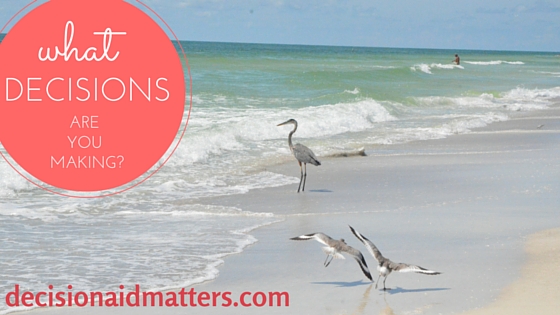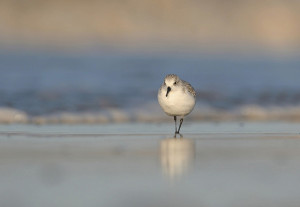The Gulf of Mexico early September is blissful. I was thoroughly entertained one afternoon while watching the shoreline birds. It struck me that even birds make decisions, from the wee wave chasing Sanderling, to the diving Seagull, and even the patient Great Blue Heron. Driven to eat, each one takes a calculated risk at the shoreline.
They each have their own way of catching prey. The Sanderling is probably the most entertaining to watch. This little bird runs toward the receding waves, pecks at the sand then swiftly darts away just in the nick of time.
Adrian Dancy – Creative Commons
The Seagull dives into the water, waves and all, in an attempt to snag a fish. The Great Blue Heron stands tall and stalwart waiting for extended periods of time until just the right moment. Then he plunges his head into the shallow water in hopes to capture his prey.
Each of these birds from tiny to tall face the same ocean and varying risks. For these beautiful creatures it may be more instinct than decision-making that frees them to face the ocean for their dinner. As these birds naturally interacted with their surrounding they unknowingly illuminated the risks and benefits of decision-making.
When faced with making a decision that has multiple options, weighing the risks and benefits of each option is an important part of informed decision-making. This important piece can sometimes be overlooked. Time, pressure, fear are just some of the things that impede informed decision-making.
Complex decisions (two or more possible outcomes) can feel overwhelming. Knowing how to proceed can help you navigate a challenging decision and reduce stress. BMJ (originally the British Medical Journal) suggests some key points to remember when considering options: [1]
- Look into all your options.
- Make sure you understand the risks and benefits of each option.
- Make sure you understand how the risks and benefits will affect you personally.
- Make sure you have enough information to make a choice.
- Make sure you understand the risks and benefits of deciding to do nothing.
Unintended pregnancy decisions can be complex with three possible options to consider. ClearLinQ believes women should be supported in decision-making. My Decision Aid © was designed to assist practitioners who support women faced with unintended pregnancy decisions. Although My Decision Aid © does NOT provide a final decision, it does support women and their practitioners to begin to consider their options.
Leaving complex decision-making to instinct is OK for the shoreline birds, but far from ideal for women facing unintended pregnancy decisions. Taking advantage of decision support tools like My Decision Aid © can be empowering for both the practitioner and the woman faced with unintended pregnancy.
“Fully exploring the risks and benefits of [each option] can help you decide what is most important to you, so you can make an informed decision.”[2]
Don’t avoid decision-making, dive in!
[1] http://clinicalevidence.bmj.com/x/set/static/ebm/practice/807268.html
[2] BMJ Publishing Group Limited, 2015. BMJ Clinical Evidence: Practice EBM: Weighing up risks and evidence. http://clinicalevidence.bmj.com/x/set/static/ebm/practice/807268.html



